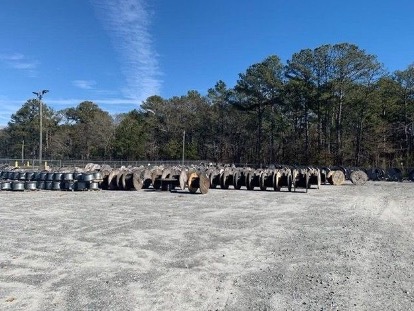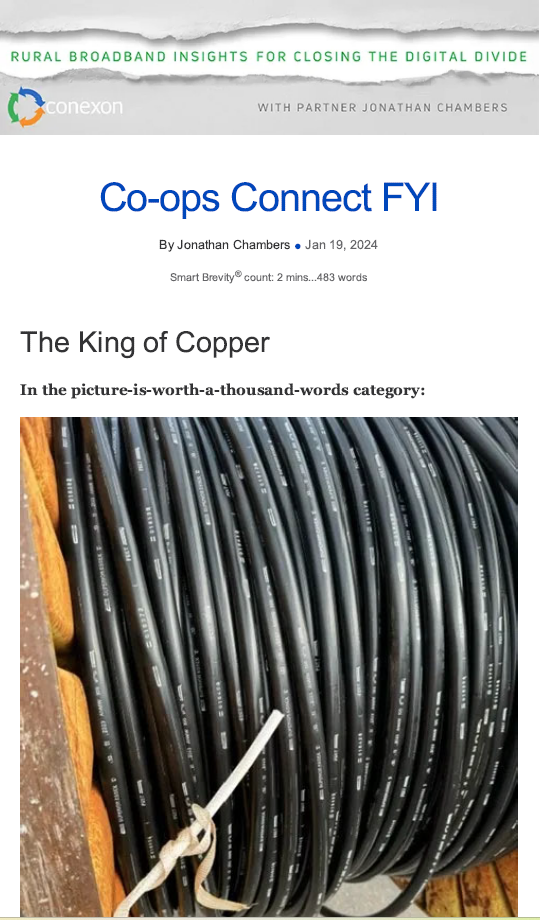The King of Copper
January 19, 2024
The King of Copper
In the picture-is-worth-a-thousand-words category:

A colleague sent me this picture of a reel of cable being placed into new conduit in a Florida subdivision, which is going through an underground conversion. AT&T is putting in brand-new Superior Essex ANMW 100 pair copper cable. Copper to the home.
When asked why copper and not fiber, the worker said, “That’s all the print calls for. I get paid the same either way.”
Is copper cheaper?
At Conexon, we never buy copper cable so I couldn’t check the price of copper with one of our materials distributors.
- Online, the list price of this copper cable is $5.76 per foot. (The price seems high. I’m sure AT&T gets better pricing for copper from its distributors.)
- Our average price for armored fiber to build a fiber-to-the-home network is less than $0.30 per foot.
AT&T has been building copper networks for over 100 years. They operate more miles of Digital Subscriber Line (DSL) copper networks than any ISP in the country. I’m sure they know what they’re doing.
No Single Right Way
I am reminded of a broadband conference I once attended, which was promoted with the banner: “There is no single right way to do broadband.”
- The conference organizers were trying to attract those who provided broadband via fiber, hybrid fiber coax (HFC), copper, fixed and mobile wireless, and satellite.
- Over the years, federal and state programs have funded all sorts of technologies and transmission media under the rubric of “technological neutrality.”
- Even the Fiber-to-the-Home Association changed its name to the Fiber Broadband Association to include companies deploying wireless networks.
But, is there a single right way for co-ops?
- By now, most electric co-ops have had one or more feasibility studies completed. Many were told the numbers didn’t work to serve all their members with fiber broadband.
- With the $42.5 billion BEAD program on the horizon, it’s reasonable to expect that someone will serve your members with broadband – maybe AT&T, Charter, StarLink, or T-Mobile. But no one will treat your members like you do.
- Earlier this week, I spoke with a co-op CEO who had received a feasibility study that proposed a hybrid fiber/fixed wireless network –giving one level of service to some members, and an inferior level of service to others. A fiber network to all members was said to be too costly.
- Conexon disagreed and demonstrated that a fiber network to all members is financially feasible. A second or third opinion is always beneficial.
A picture really is worth a thousand words.
Over the past several years, with co-ops and our partners, Conexon has designed and built more miles of fiber networks in rural America than anyone.
- We don’t build copper, HFC, or wireless.
- We believe fiber is a better investment in rural America and we invest our own money in rural fiber networks.


